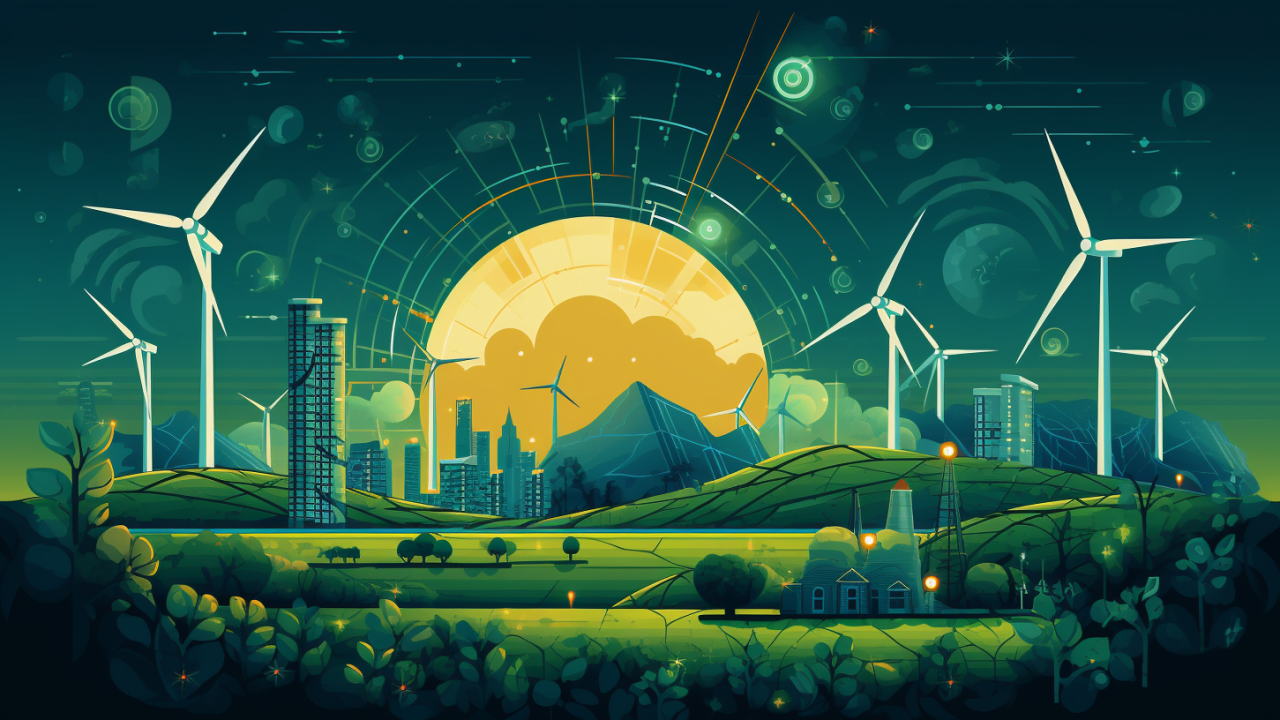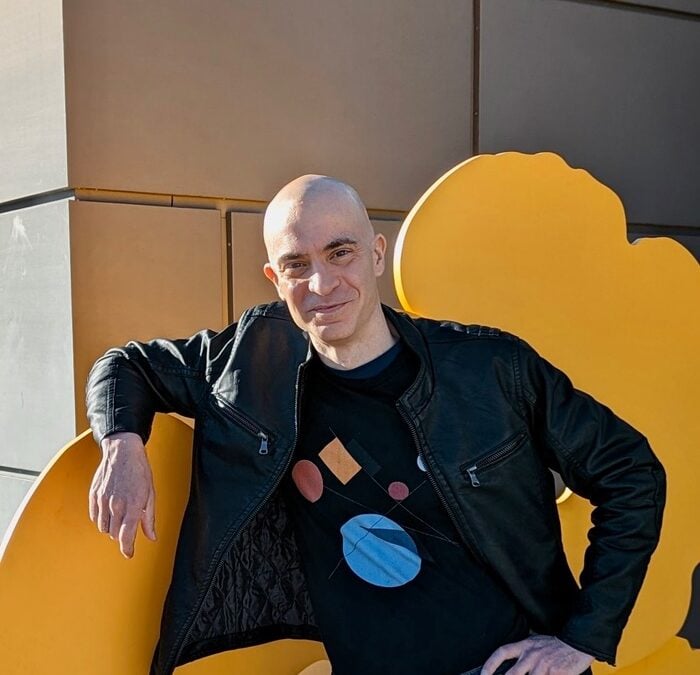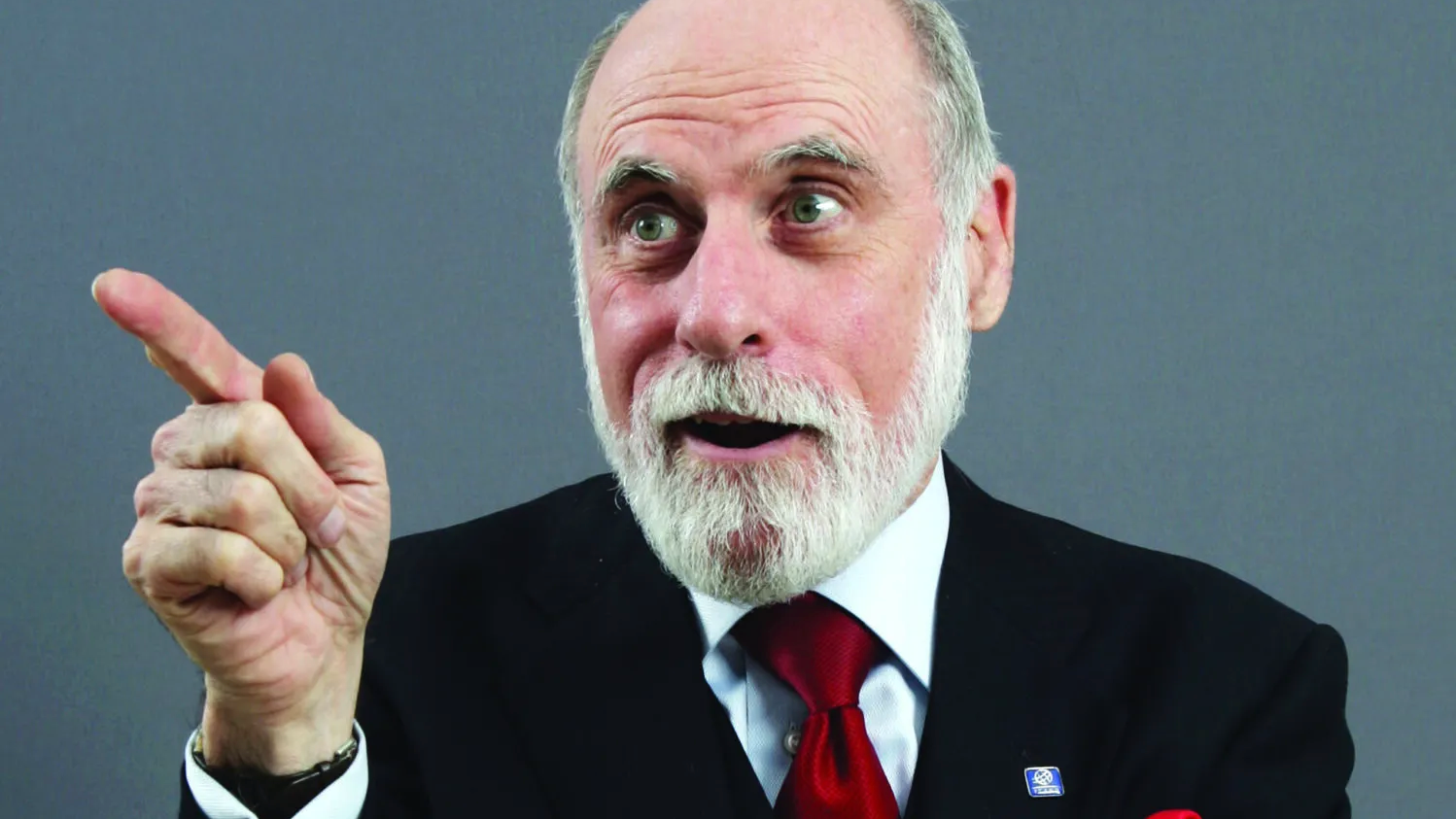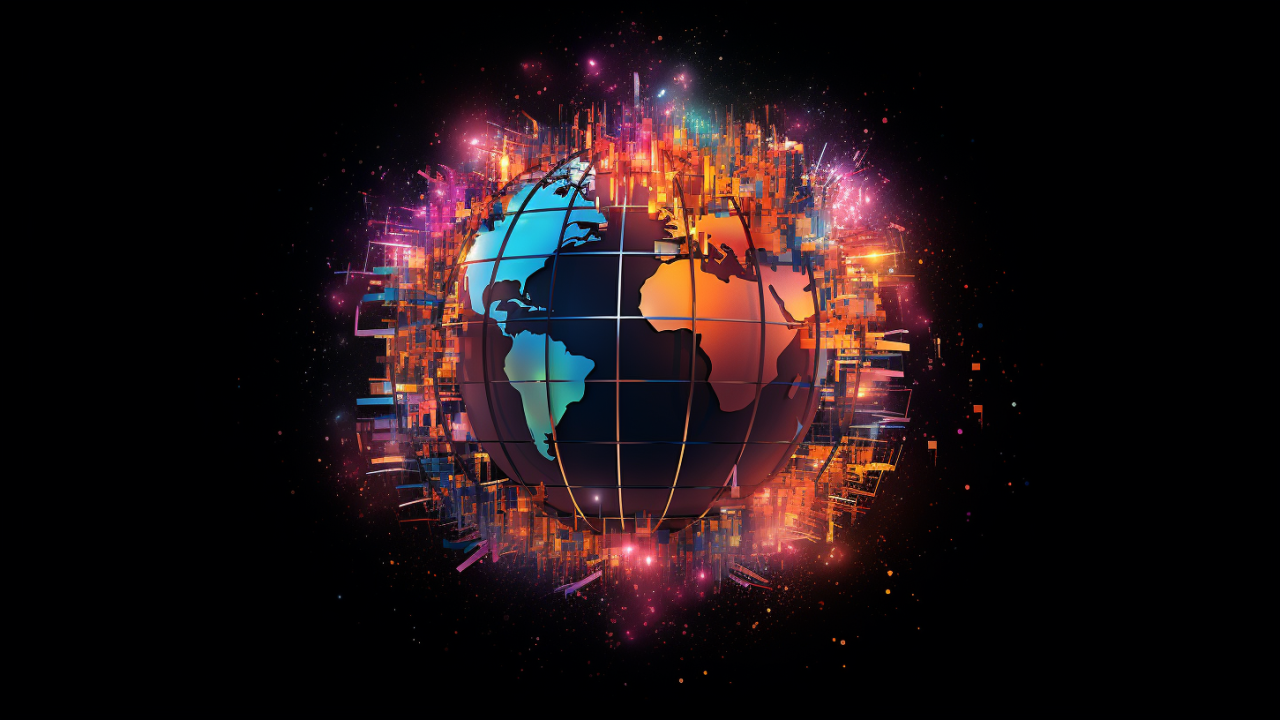
Aphorisms like “Two heads are better than one” and “Many hands make light work” are realized with artificial intelligence, which delivers the equivalent of dozens, hundreds, thousands, or millions of additional minds or hands. AI raises legitimate fears about replacing human creativity. But it can also augment human ingenuity to tackle the most complex problems of engineering and logistics or offer critical labor assistance for chronically understaffed schools, hospitals, and other institutions.
These benefits extend across significant global challenges, including climate change, natural disaster response, food security, public health, and equitable education. There are countless (because the number keeps growing) examples in all these areas. We highlight a few cases of the most inspired here.

Join us at TE23 in Lake Nona, FL, November 12-14, as we dive into AI development’s opportunities, threats, and challenges. From healthcare to agriculture, government to climate, transportation to finance, our expert speakers will delve into how AI will revolutionize every industry. Request an invitation.
Climate: Green Reengineering

We have the solutions for climate change—but we need to improve them. Clean power sources like wind turbines need to be stronger and last longer. Batteries need to be cheaper and cleaner. Energy efficiency has to go deeper. How, for instance, do you wring even more efficiency out of a machine that already works well? How do you replace metals and other materials that do the job but at too high an environmental cost? Humans alone might solve any one of these complex engineering problems, given enough time. But the problems are legion, and time is dwindling.
Iuri Rocha is teaching artificial intelligence to do in minutes what would take years for teams of engineers or even traditional computing to do—imagine, design, and test breakthrough green materials. Rocha, director of the SLIMM Lab at the Delft University of Technology in the Netherlands, is remaking giant wind turbine blades to be stronger, more weather resistant, and recyclable for when their extended lifetime finally does end. But the machine learning AI he’s developed can engineer greener versions of anything—batteries, airplanes, even concrete.
“If we were to design these things using traditional methods, we would need an absurd amount of experiments,” he says, giving the example of an airplane wing. It starts with reformulating composite materials, such as carbon fiber, then manufacturing small pieces of it and testing them against stressors until they break. Engineers build and break progressively larger pieces, until finally, they start breaking full-scale wings. This can take years, says Rocha.
And that’s for a process that already uses computer models to do some of the testing virtually. “We have to model the materials at very, very small scales, sometimes at the atomic level,” says Rocha. These models may involve millions of complicated equations. Even with assistance from powerful computers, Rocha’s Ph.D. work designing new turbine blades would have taken three years. “That’s when I started looking at ways to make it faster,” he says. “That’s how I got into machine learning in the first place.”
Machine learning studies vast amounts of data to discover underlying patterns. In the case of virtual material design, Rocha’s models analyzed the results of very mathematically complex computer simulations and discovered an alternate set of calculations that are simpler and easier to run. “If you show them enough examples of how materials behave, [machine learning algorithms] can tell you really fast how our new material can behave,” he says. In place of computer simulations that take years, these new AI-derived models can run in minutes.
Rocha uses this technology to experiment with new coatings that keep water from seeping into turbine blades. He’s also looking for alternatives to the traditional glass-fiber epoxy formulation—testing carbon fiber or Kevlar as reinforcing materials and sustainable substitutes, such as flax. But this is just one example of what his tools can do.
“A large part of what I do is develop these techniques that are application agnostic,” he says. The same technology could also help discover greener formulations for concrete, which can be made with many different types of chemicals and reinforcement materials. “There are…billions of different ways to arrange it into a structure,” he says.
Similar factors apply to battery engineering, with different materials for the positive and negative poles of the battery or different electrolyte materials that facilitate the movement of electrons. “You could train a machine learning model that could generate your new battery, new battery systems, in principle millions of them in a couple of seconds,” he says.
This is beyond theoretical. Companies are already using their own machine-learning models to improve power cells. Kaixiang Lin and Jason Koeller, co-founders of U.S.-based Chemix.ai, describe their process as a “self-driving battery lab” with AI that studies existing battery designs and deduces fundamental principles to test in new designs. AI then draws lessons from those unique designs, which inform another round of experiments—etc.
Rocha is now envisioning the move to generative AI, like that in ChatGPT or Midjourney. But instead of being trained on words or images, these systems would be trained on engineering examples. “So in the future, we will have systems that take our prompts,” says Rocha. “Like I need a new airplane wing for an airplane of this and that size for this number of passengers, and it will give you a new material.”
Natural Disasters: Proactive Response

Even the most ardent climate change deniers couldn’t miss the devastation of this past summer—with weeks of pavement-melting temperatures across the U.S. and a continent-spanning wave of caustic smoke roiling off Canadian forest fires. An unprecedented wave of floods swept across New England, India, Japan, China, and Turkey. While the world struggles to minimize future global warming, it must adapt to the climate changes that are already baked in. That requires rescuing people from the higher onslaught of natural disasters and helping them recover in the aftermath.
“These events will just get worse and worse,” says Ali Mostafavi, director of the Urban Resilience.AI Lab at Texas A&M University and founder of the disaster response tech startup Resilitix Intelligence. “But now is the time for us to leverage these [AI] technologies to help communities cope better.” His institute focuses on the storms and flooding that plague Texas and neighboring states. “Using AI, we can ingest datasets related to storm rainfall, plus flood gauges, plus past flood models, so that we can have better predictions of areas that will be inundated,” he says. One upside is warning people to avoid driving in areas likely to be under water. More than a million cars were inundated in Hurricane Harvey, which swamped Texas and Louisiana in 2017, drowning several passengers.
These AI technologies extend beyond Mostafavi’s flood-preparedness projects. For instance, satellite imagery is of such high resolution now that it can show where trees are likely to brush against power lines and spark a wildfire. That’s too much imagery for humans to pore over, but not for computer-vision AI technologies. Companies such as AiDash and Hitachi are already deploying these technologies.
Similar image analysis helps in the aftermath of disasters that couldn’t be prevented. “It can identify and map damage to homes far faster than sending human assessors into the field,” says Mostafavi, speeding the delivery of medical and other relief and the cutting of insurance checks for rebuilding.
AI-aided disaster preparedness extends to crowdsourcing data from people. Marketers have long used cellphone-based location tracking to find out where people shop, but that same tech can save lives. By seeing where people buy emergency supplies, disaster response teams get clues about where conditions are worse. Location data also tells responders whether people are evacuating. “With rapidly accelerating hurricanes, we see that people have less time to evacuate, and some decide to shelter in place,” says Mostafavi.
Disaster responders also get explicit information about what people are up to. “Hurricane Harvey is referred to as a social media disaster,” says Mostafavi, with people posting prodigiously to report flooding, downed trees, or power outages—or to request or provide advice for weathering the storm. “In Harvey, we collected more than 23 million tweets, just from the Houston area,” he says, “and analyzing them manually is impossible.” But natural language processing AI could ascertain patterns in power outages and road inundations and map them out for dispatching emergency responders.
“Social media,” in this case, means Twitter (now known as X)—the richest, most accessible source of real-time information. “At this point, we don’t see any feasible replacement,” says Mostafavi. But Elon Musk’s management has provoked another social media disaster, turning off users and depressing traffic. And new data-collecting restrictions—meant to limit information-harvesting from AI companies—limit disaster researchers’ ability. Mostafavi would like to see Twitter at least open up access during emergencies.
Food Security: Optimized Harvests

At times too wet, at others too dry, and very often too hot—our new climate will make it harder to grow enough food. But even were the climate stable, feeding a still-ballooning global population (which the UN expects to jump from 8 billion to 9.7 billion by 2050) would be a massive challenge. Getting there sustainably and economically requires more judicious use of life-supporting water and fertilizer and life-suppressing herbicides and pesticides. And even bountiful harvests are still decimated by waste and spoilage on the way to hungry mouths (with around 14% lost between harvest and retail, reckons the UN).
Professor Changying “Charlie” Li at the University of Florida is developing AI technologies to tackle all those problems. It starts with breeding the most productive plants. Li’s team analyzes crops using traditional cameras and “hyperspectral” sensors that extend beyond visible light into wavelengths such as infrared and ultraviolet. They also use LIDAR, a laser technology, to produce 3D images.
All this data reveals a great deal about plants, such as how stocky they are, how many branches or shoots they have, how quickly they grow, how efficiently they turn sunlight into food through photosynthesis, and even if the fruit is bruised. There’s no way for humans to collect or analyze anywhere near as much information. “If there were 1000 plants, and people would go to count the number of flowers for each plant, that would be impossible,” says Li. At best, they can provide a subjective sampling, rating a bunch of plants on a scale of one to 10 for how flowerful they seem to be.
“We perform computer vision and data analytics using machine learning data, AI methods, deep learning methods [to] detect and count the number of flowers,” Li says. “So, this is a very high spatial resolution as well as a high temporal resolution because we can do that every day or every other day.” Timing is essential because plants that flower too late may not produce as much food in time for harvest. By analyzing different genetic variations of plants such as blueberries or peanuts on a research farm, AI can identify the most productive strains for breeders to develop.
AI can also help on working farms. Automated irrigation or spraying systems can target water or fertilizer specifically to the plants that need more help and apply growth-slowing chemicals to the plants that are wasting energy by growing too quickly. Image analysis can also track the spread of weeds to apply herbicides more sparingly or deploy robotic remedies, including zapping weeds with lasers.
That’s pretty exotic tech for the tight-margin world of farming—especially in less developed regions. But Li’s team has also created more straightforward tools, such as a web-based AI app that anyone with a smartphone and internet access can use. It evaluates images of blueberries to determine if they are bruised internally, which isn’t easy for people to see (and it could be applied to other fruits, says Li). Bruised berries are likely to spoil on the way to far-off markets. So growers may opt to sell them locally or divert them to making processed foods, like jam. (Bruising accounts for 10% of all economic losses in the U.S. blueberry industry, for instance.) The tech can also help growers tweak their harvesting methods to be less damaging to the fruit.
Analyzing such damage is also helping to develop the brave new world of robotic harvesting. “I went to Tampa to meet with tomato and strawberry growers. And they said the industry is desperate right now,” says Li. “Without robotic harvesting, or AI technologies, they will leave business shortly because they cannot find the labor to do harvesting.”
Growers may still have to wait a while as the technology develops. A Florida company called Harvest CROO is testing strawberry-picking machines, for instance. Researchers at Washington State and Michigan State universities are experimenting with prototype apple-picking machines. “I think there’s huge room for us to leverage AI robotics technologies to help growers,” says Li.
Public Health: Augmented Practitioners

Nutrition is just one component of health that’s in short supply. A growing population, coupled with a growingly older population (with those over 60 years doubling by 2050, per the WHO), associated with professional burnout from the COVID-19 pandemic has strained the cadre of healthcare providers. According to the U.S. Health Resources & Services Administration, for instance, the country is short more than 17,000 primary care and 12,000 dental health practitioners. The World Health Organization forecasts a 10-million health worker shortage by 2030, hitting low- and lower-middle-income countries the hardest.
So it’s a travesty that these overstretched providers spend so much of their time on paperwork, for insurance or other documentation, rather than seeing patients. It can consume up to 19 hours per week for some U.S. doctors, according to the Medscape Physician Compensation Report 2023. “Even if you don’t get documentation down to 0% of a doctor’s time, but you may get closer to 20% or 10%—that’s huge,” says Betsy Stade, a postdoctoral fellow in psychiatry, behavioral sciences, and psychology at Stanford University. AI can make that happen.
The industry first tried to reduce the burden by hiring other people to write out doctor’s dictated notes. Now AI is taking over. “Five years ago, when I was doing a research project involving a need to transcribe, I was told that it was better to have humans do it. And now this has totally changed,” says Stade. She sees large language models (LLMs), like those powering ChatGPT and Google Bard, as game changers. “The computer’s ability to figure out, using context, what was being said and what the best guess for the word would be, or this sentence would be…has just gotten very, very sophisticated,” she says. This AI assist could work across the medical field, but Stade’s research focuses on mental health, where the U.S. is short nearly 8,000 practitioners, according to a 2022 survey by the Kaiser Family Foundation.
Stade is now studying AI’s ability to go beyond transcribing and into the analysis of psychology sessions (if the patient consents to recording). “Therapists, when they’re writing progress notes, tend to talk a lot of times about higher-level themes,” she says. A company called Eleos Health uses natural language processing AI to assist therapists in this task. And Stade believes the advent of large language models will make such analytical processes even more effective.
AI could further reduce paperwork by augmenting or replacing regular questionnaires like the PHQ-9, which asks people to rate how often they have depression symptoms like poor sleep or feeling bad about themselves. “It’s kind of annoying for the patient, and it takes time out of therapy to do it, and then the therapist has to score it,” says Stade.
She’s studying alternative methods that assess depression and anxiety based on patients’ word choice (such as heavy use of “I,” “me,” and “my,” or sadness words like “low,” “sad,” “alone”), using natural language processing AI. “We’re not at a stage where this is necessarily ready for use in the clinic. But we’re starting to get there,” she says.
Meanwhile, a company called Kintsugi Mindful Wellness is using AI to analyze patterns in how people speak—such as pitch, intonation, tone, and pauses—for signs of depression or anxiety. Such technologies “could allow for this continuous monitoring without having to stop and hand someone a stack of forms to fill out,” says Stade.
AI could further reduce the mental healthcare backlog by empowering lower-skilled people, such as trained peer counselors, says Stade. For instance, AI can monitor these sessions and provide coaching, such as how to express empathy better, or guide them to give responses that are known to be constructive, like encouraging an individual with depression to schedule daily activities.
Stade is bullish but also cautious about AI’s ability to take over more and more duties from therapists. She advocates starting modestly, like continuing to develop AI-assisted note-taking. From there, it might progress to relatively straightforward tasks, such as chatbots that can deliver cognitive behavioral therapy for clients dealing with insomnia. (Stade points to chatbots like Woebot and Youper, already providing basic counseling.)
“Intelligent people disagree about whether fully-autonomous generative AI applications should ever be used in mental health care, primarily because of concerns about AI safety,” says Stade. “I, personally, am cautiously optimistic that we may reach a future where some aspects of mental health care could be fully automated in a safe, responsible, and evidence-based manner.”
Education: Virtual Teachers and Tutors

As with healthcare workers, the world also needs more teachers. In a 2022 Education Week poll, 72% of U.S. schools reported needing more applicants to fill open positions. Worldwide, UNESCO forecasts a shortage of 69 million teachers by 2030.
AI can help to stretch scarce human resources here. Generative tools like Diffit and Nolej, for instance, can produce lesson plans and interactive exercises based on topics and criteria that teachers specify. AI can also fill in for supervisors. With a tool called TeachFX, instructors can upload recordings of their classes to get insights on what is working and what can be improved.
Artificial intelligence can also help evaluate student work, according to Perpetual Baffour, research director at The Learning Agency Lab. This nonprofit runs data science competitions to spur the development of educational AI algorithms. One is focused on evaluating student essays. “We had winning teams build algorithms that had the accuracy at the level of a human, meaning they were just as accurate in identifying different components of an argument in an essay as an expert, human rater,” says Baffour. “We’re now working with different organizations interested in using that algorithm in their tools.” ASSISTments, another nonprofit, ran a contest for assessing student math work.
The Learning Agency Lab’s competition came before ChatGPT’s generative AI tech emerged as a significant cheating tool for student essays, and Baffour acknowledges the new challenge. But she also sees the upsides of the latest technology, such as generating writing prompts and customizing exercises for students. “Let’s say a kid is super interested in baseball but gets super bored in writing class,” she says. “Now you can use ChatGPT to come up with writing exercises centered on the topic of baseball—so using the generative AI tools to generate lesson plans, exercises, assessments that can be valid, that can be personally relevant, culturally relevant, engaging to the student and focused on key writing skills.”
Such AI-customized instruction can also help close an equity gap—between students whose families can afford a private tutor and those who can’t. A tool called Presto, for instance, tutors students in writing by providing prompts to help them outline an essay and furnishing tips to alert them to what’s missing. Khanmigo, a free offering of the nonprofit Khan Academy, also walks students through the writing process with questions and tips.
Even ChatGPT can be a tutor, says David Gunkel, professor of media studies at Northern Illinois University and author of several books on AI. “One of the things that my students who are learning English as a second language tell me is that they have a perfect tool now at their disposal with ChatGPT,” he says, “because they can chat with ChatGPT and work on developing their English skills. And this is something in the past that they had to do with either volunteers online or with a paid tutor.”
AI tutors are not only for language skills. Khanmigo also teaches programming. ASSISTments has a math tutoring program, and Carnegie Mellon University is developing another.
Artificial intelligence “definitely democratizes the access to personalized support, individualized instruction,” says Baffour, though she cautions that the tech is still in its infancy.
And this democratizing force is not evenly distributed. Being essentially cloud-based, AI tools generally require continuous internet access, which more than a third of the world still lacks. Nonprofit organization Learning Equality has developed a platform called Kolibri to get around that challenge. It’s developed software for computers and smartphones that can be downloaded once, where internet access is available, then shared device-to-device everywhere else.
There are also cultural barriers to overcome. Many AI language tools are based on English, and certain forms of English. Baffour says there’s a need to refine AI to better understand other accents and dialects, from Ghanaian to African-American Vernacular English in the U.S. and Canada.
“If we’re able to build AI tools that aren’t biased, and that [are] fair, then we will be able to see more equity in the delivery of educational content,” says Baffour, “because now more and more students have access to quality instruction and support.”
Techonomy 23: The Promise and Peril of AI
Techonomy 23: is a three-day retreat dedicated to exploring the risks and rewards of the AI revolution. Join our live audience of 200 CEOs, CTOs, policymakers, academics, and thought leaders as we chart a course...








